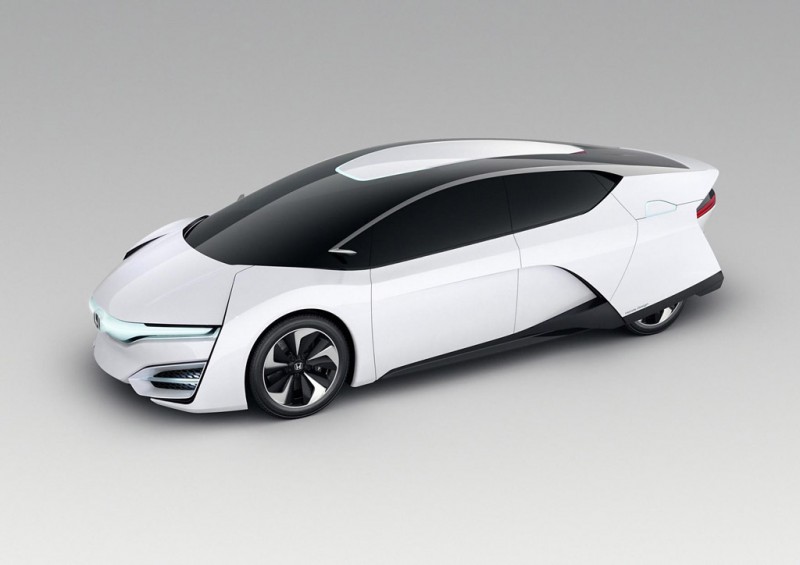The latest Honda FCEV concept model makes its debut European appearance at the Geneva Motor Show, taking over from the highly acclaimed FCX Clarity (Honda’s first attempt at a fuel cell electric vehicle; FCV). With an ultra-aerodynamic body, the concept points to the potential styling direction of Honda’s next-generation fuel-cell electric vehicle which launches in the U.S. and Japan in 2015, followed by Europe thereafter. Perhaps surprising when looking at the shape is that the concept has ample interior space too, being able to accomodate up to five passengers.
To achieve this neat piece of packaging design, Honda managed to put the entire fuel-cell drivetrain into the engine compartment of the vehicle, a feat never before succeeded. The significance of this achievement is that not only have Honda made the initial FCEV prototype as spacious as it is, but Honda will also be more easily able to apply the same powertrain to other vehicles and applications.
It is incredible how fast most technology developments are accomplished, and none more so that Honda’s fuel-cell stack which has had an increase of 60% power density to 3kW/L of Hydrogen and outputting a total 100kW of power. Despite these increases in efficiency, Honda have reduced the fuel-cell in size by 33% when compared to 2008’s FCX Clarity concept. With all those numbers flying about plus a small powertrain footprint, the obvious question is what does it all mean? Well, in real terms it means a driving range of approximately 430 miles (700km), refuelling taking about 3 minutes (at 70MPa) and emissions being zero CO2 and just water vapour. Thomas Brachmann – Fuel Cell Technology, Honda R&D Europe, said:
“Building on twenty years of fuel-cell leadership with the FCX and FCX Clarity, the FCEV Concept sets the direction for our next-generation fuel-cell vehicle and for future improvements in electric-drive technology. While this car is a concept, it points towards a very real future.”
In 2011, Honda joined the Clean Energy Partnership, the CEP is Europe’s leading fuel cell vehicle and hydrogen infrastructure demonstration project. More recently, Honda’s participation in the H2 Mobility Programmes in Germany and the UK demonstrate its commitment to synchronise the rollout of vehicles and hydrogen infrastructure.
Further Evolution – NSX Concept
Also making its European debut at Geneva is the latest evolution of the NSX Concept, revealing a chassis layout with a longitudinal, V6, direct injection engine with twin turbo.
The forthcoming new NSX will feature Sport Hybrid Super Handling All Wheel Drive (SH-AWD), delivering a whole new level of both fuel economy and superior driving performance by combining a new mid-mounted V6 direct-injection twin turbo engine and an all new dual-clutch transmission (DCT).
Utilising a unique two-motor Electric Motor Drive Unit with a bilateral torque adjustable control system, the new hybrid all-wheel-drive system can instantly generate negative or positive torque to the front wheels during cornering, delivering far superior handling performance to previous AWD systems.
The SH-AWD system on the new NSX will have a mid-mounted powertrain, with the electric motors on the front wheels.
Source; Honda

